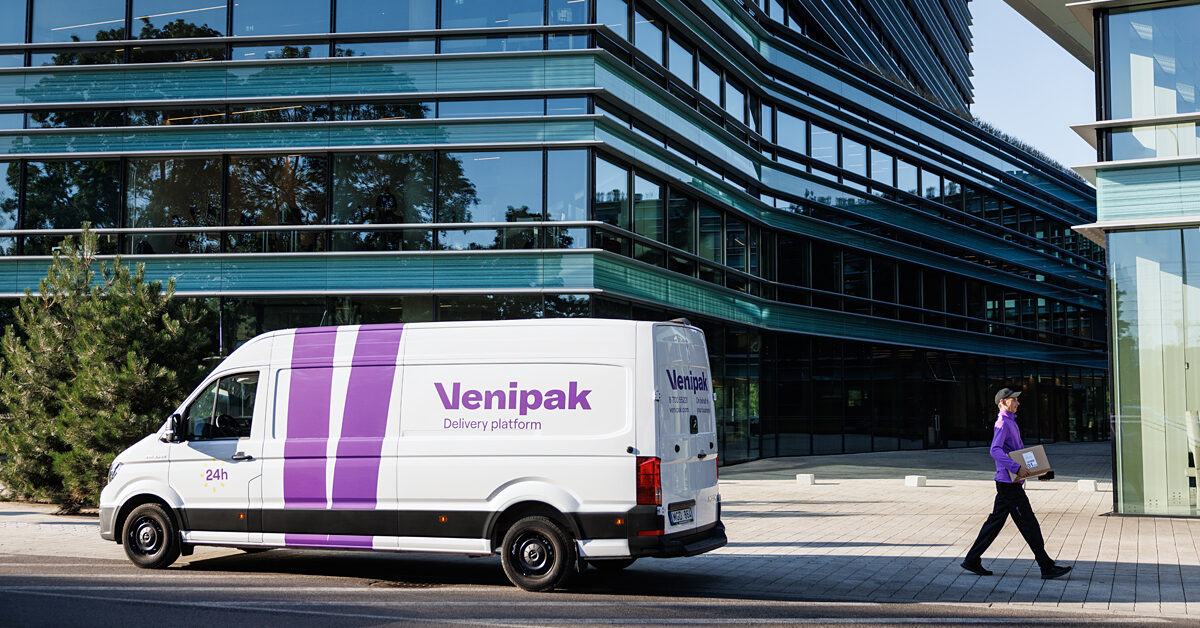E-commerce has gained a strong foothold in Estonia and across the world, but its growth shows no signs of slowing down. According to a recent survey by Venipak, the share of e-shoppers in the Baltics is significant: as many as 94% of Estonians, 97% of Latvians and 98% of Lithuanians surveyed buy goods online. Sabina Bačiulienė, Head of International Business Development at Venipak, Maarja Lenk, Head of Marketing at ON24.ee and Jürgen Jänese, Head of e-pharmacy at Aphotheka, discuss the current situation of e-commerce in the Baltics, the most popular product groups and the challenges facing the sector.
According to Sabina Bačiulienė, e-commerce is characterised by a continuous moving towards digitalisation. “Traditional, so-called offline commerce is declining. In the next decade, a significant proportion of businesses will most likely move online,” explains Venipak’s Head of International Business Development. She stresses that the customer experience is becoming more and more important, and that a variety of technological solutions are being used to improve it. A good example is a CRM system, or customer relationship management system, which helps to create a personalised shopping experience using the collected data.
Customer experience is also important for local e-shops. ON24.ee Head of Marketing, Maarja Lenk, highlights the availability of a convenient product trying and returns service. “We have made the return process very convenient for our customers. We encourage our customers to order and try the products at home. If, for any reason, the product doesn’t fit or doesn’t meet their expectations, they have the option to return it to us free of charge. The number of returns has been stable and has remained largely unchanged over the years,” Lenk explains, adding that the free return option makes it convenient and risk-free for customers to order couches, for example.
Jürgen Jänese, head of e-pharmacy at Apotheka, highlights their online shop’s chat window. “Apotheka e-pharmacy is a special online shop because it also offers professional pharmacist advice via a chat window, and this until the late hours of the night,” emphasises Jänese.
Services also play a major role in Baltic e-commerce.
When comparing e-commerce in the Baltic countries with the US or Western Europe, clear differences emerge. “The main difference is the size of the market. The Baltic market is small, we have a smaller number of consumers, but we have quite a lot of cross-border trade. America, on the other hand, stands out with the most modern e-commerce solutions. In addition, the e-commerce market there has adapted its product range and solutions to suit the diverse and multi-ethnic US consumer base. In Western Europe, people buy practically everything online: food, clothes, household goods. In the Baltics, however, services purchased online have a large share in addition to traditional e-commerce products. For example, people buy cinema and airline tickets, insurance policies, etc. online,” says Bačiulienė, listing the main differences.
Of course, people also shop online for food, clothing, footwear, and household goods in the Baltic countries, especially in recent years. “In the Baltic countries, e-commerce really took off during the pandemic, when most shops could not be visited physically. It also gave a strong impulse to many businesses to go from offline to online,” adds Bačiulienė.
Estonians prefer e-shops to physical stores mainly for buying clothes, footwear, and electronics, but they are also buying more and more furniture and medicines online. “Among our furniture range, the most preferred product group for our customers is hard furniture (cabinets, shelves, tables, beds). These products are also the easiest to order online based on pictures and product information, and there is no need to try them out beforehand,” explains Maaja Lenk.
Jügen Jänese, on the other hand, points out that the most requested product groups in e-pharmacies are pharmacy cosmetics and nutritional supplements. “At the same time, prescription medicines have been the fastest-growing category recently,” adds Jänese.
Maarja Lenk points out that, in terms of hours, most purchases are made during the day, between 10-12. “Overall, however, it is quite similar throughout the day. In the summer, the activity shifts more towards the evening. Rather, it can be said that the number of orders is higher in the beginning of the week than in the middle of the week. Activity is also higher on weekends in the beginning of the month than at the end of the month,” Lenk says.
Main bottlenecks in e-commerce: logistics and volatile fuel prices
Bačiulienė sees logistics complexity as the main challenge for e-commerce. “Logistics solutions determine customer experience and costs, which is why efficient logistics is critical in e-commerce. As logistics is an integral part of e-commerce, any logistics solution can improve both the final customer experience and the success of businesses. Venipak can help solve logistical problems by taking care of part of the supply chain, such as warehousing, fullfilment, the last mile. The last mile, i.e., the transport of goods from the nearest distribution centre to the final destination, is considered to be the most important, but also the most costly part of the supply chain,” explains Bačiulienė. She adds that the e-commerce sector is also affected by fluctuating fuel prices, which in turn depend on various global trends.
